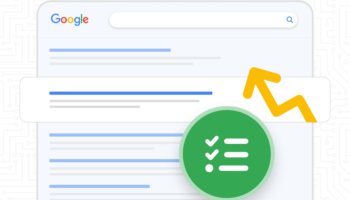Online maps generated by satellites are a staple of modern society. The days of printing out a MapQuest page or trying to guess whether you just passed “the third right after the tree” are largely over. But are you properly utilizing this technology? Let’s go over some ways you can use online maps, primarily Google Maps, to better meet the needs of your customers.
Address Autocomplete
Most online marketplaces require customers to enter their billing/shipping address during checkout. There are many ways to speed up this process, such as saving a user’s address information to their account or auto-filling commonly used addresses. Another method that you may have seen is address autocomplete. This typically consists of a dropdown feature that appears as a user types in their address, allowing the user to click their address and autocomplete all fields. Not only does this speed up the checkout process, it also offers the user an additional level of confidence in their delivery because they can be assured that the address they entered is both properly formatted and a real address. This reduces instances of incorrectly inputted addresses and deliveries sent to the wrong address.
Adding an address autocomplete feature to your site’s checkout process is most easily done through a plugin. We like the Google Address Autocomplete for WooCommerce plugin, but address autocomplete is such a common feature that there are many different plugins to choose from depending on your marketplace setup. Most address autocomplete plugins use the Google Places Autocomplete API.
Embedded Google Maps
Every website that advertises a physical location should have their address listed on their website, but can and should you do more? One of the most common uses for Google Maps on a site is to embed a map of your location. This gives your users a much better idea of where you’re located, allows them to view the surrounding area and better plan their trip, and an embedded Google Map can even be incorporated with Google Street View to allow users to virtually walk through your location’s neighborhood. You can also offer a clickable link to your address that will often integrate seamlessly with a user’s smartphone so they can instantly pull up directions to your location.
Embedded Google Maps are implemented using the Google Maps Embed API.
Store Locator
Does your site advertise multiple locations? Then you should consider adding a store locator that directs users to the store closest to them. This is often done through either a manually inputted zip code or by tracking a user’s location with their permission. There are many store locator plugins available, and we’ve used Store Locator Plus with great success. Check out the Store Locator Plus plugin in action on this store locator page for the seafood company, Cozy Harbor.
Coverage Map
Does your business offer services only in select areas? You can create a custom map with an outline of the service area available for your clients, like this locations page for the pest control company, Modern Pest. This map was created using the Google Maps JavaScript API with custom plotted points and a custom overlay to designate the service areas.
Cost of Using Google Maps APIs
The cost of using Google Maps on your website depends entirely on how you’re using it and which APIs you need. Something like a simple embedded map will be free, while using address autocomplete will cost a small fee depending on usage. Many of the APIs are functionally free for lower traffic sites, as almost all have a free tier and only start charging when the API sees high usage. Check out this pricing sheet for some more details on Google Maps APIs and their pricing options.





